“From said Square to the Palmyra Town Line going south; Elm Street.”
*
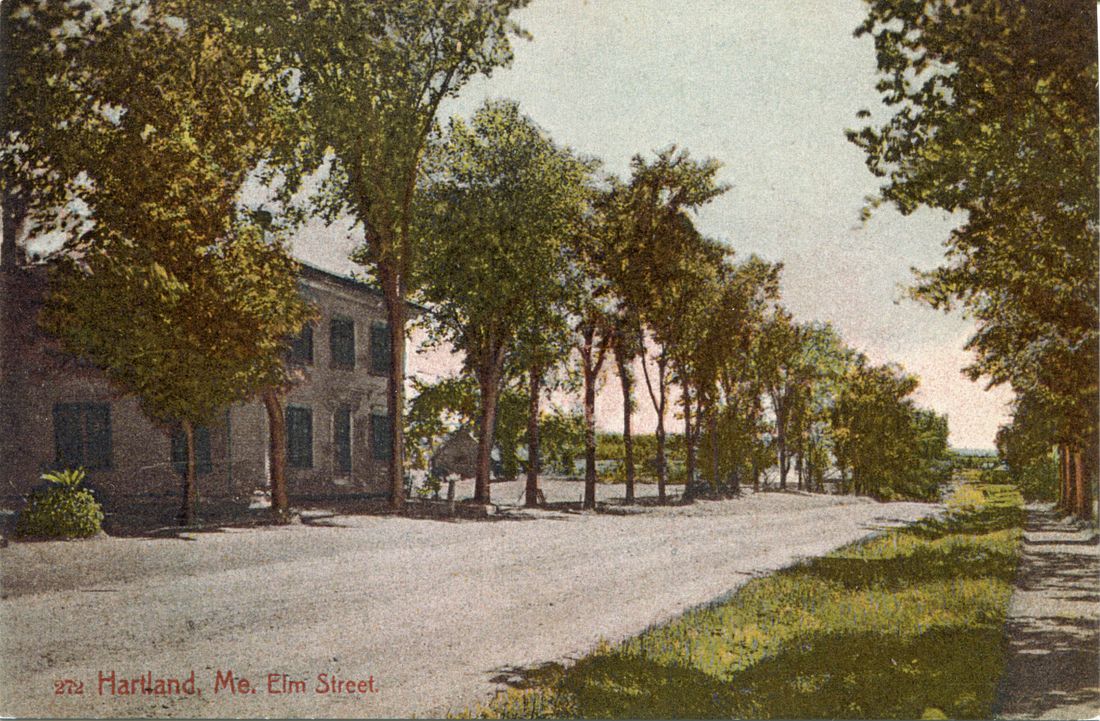
Looking south along Elm Street from Warren Square with James Fuller, Jr Original Residence
*
All of the Elm Street area, as well as much of the future Hartland Village area, was originally part of the future town of St Albans when it was purchased by William Moor of Goffstown, New Hampshire. Moor first came to explore the area around 1796 after St Albans was first surveyed as Township No. 5 in the 4th Range north of the Waldo Patent. Moor’s expansive lot stretched along both sides of the Sebasticook River and remained part of St Albans when it incorporated at a town in 1813.
This edited close-up of the original map surveyed by Samuel Weston in 1798 is rotated to a north-south perspective and highlights the original existing borders at the time of future towns surrounding Moor’s Lot S-17. Since Weston’s primary assignment was to survey St Albans and Palmyra, there were some obvious omissions on his map of Great Moose Lake bordering Hartland and Harmony and only a partial inclusion of its Sebasticook River outlet. Hartland’s original surveyed southern border with the L of Palmyra and the Gore of the Mile and a Half Strip are also highlighted. (See Maps page for further details)
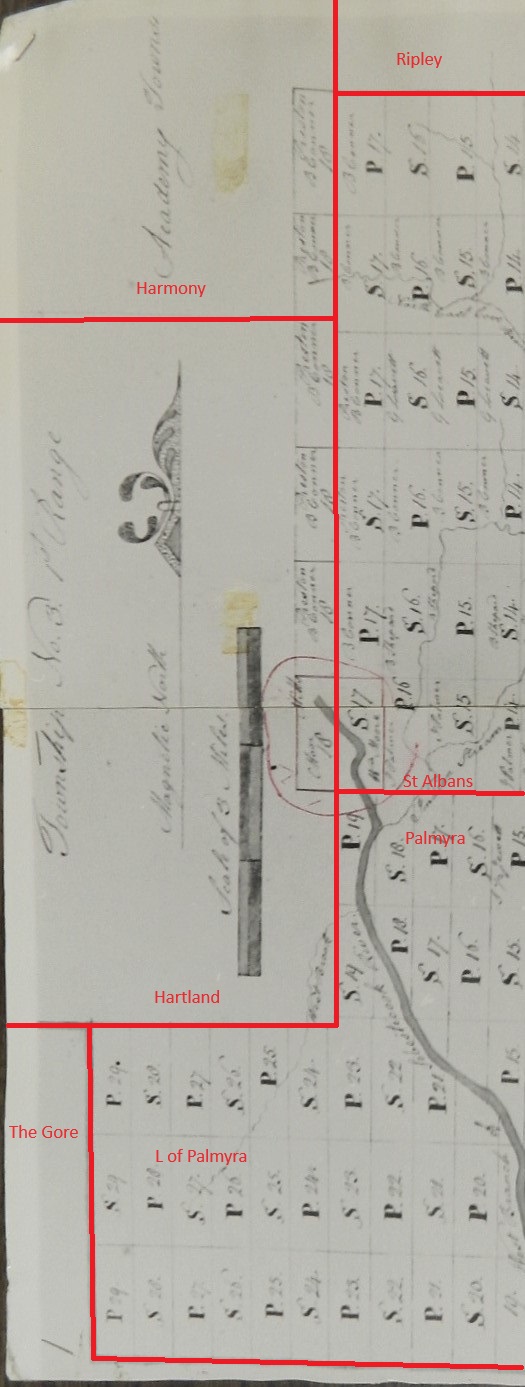
Edited Map of William Moor’s Lot S-17 location in Township No. 5 – 1798
*
For further visual reference, Moor’s entire Lot is highlighted below as it would have existed on a future map of the village area in 1883.
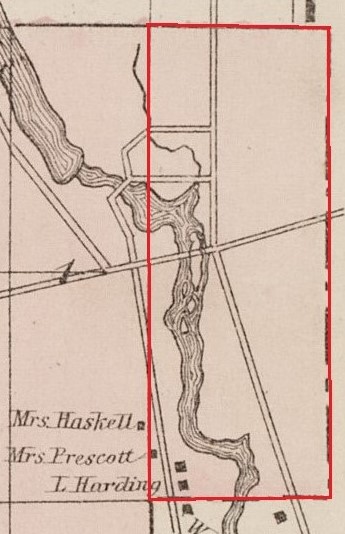
William Moor Lot Location Reference
*
It is unknown exactly when Elm Street as we know it came to be built but according to the 1911-1912 East Somerset County Register at least part of the original road from Main Street ran closer along the banks of the Sebasticook River before joining back to its current route. It was likely part of the first connecting road system commissioned by Dr. Warren around 1804 to connect his 4 Townships of Hartland, Palmyra, St. Albans and Corinna which were surveyed and constructed under the guidance of Samuel Lancey of Palmyra as noted in records from Corinna.
*
It would take until 1846, and several debates among citizens of both towns, before the current borders of the village area between Hartland and St Albans were finally established following a petition presented by inhabitants of St Albans living on the eastern side of the village area to the Maine State Legislature.
On August 7, 1846, the Legislature formally approved an Act to again alter some of the Hartland and St Albans town line on the eastern and a part of the western side of the village reading in part as, “From and after the passage of this act, all that part of the Town of St Albans, in the County of Somerset, which lies west of Lot Numbered Sixteen, in the First Range of lots in said Town of St Albans, be, and is hereby set off from said Town of St Albans and annexed to the Town of Hartland in said County.”
As seen on this illustrated future map of 1883 as reference, the majority of this annexed land including Elm Street was William Moor’s entire original Lot Seventeen which had since been divided into multiple properties. Also included was a small section of land west of the northwestern side of Moor’s lot bordering the Sebasticook River which had been previously annexed from Hartland to St Albans in 1821.

Hartland Village following 1846 Land Annexation from St Albans
*
Currently, no maps of Hartland detailing the locations of homes, businesses and merchants before 1860 have been discovered. Various documents provide us with enough information to know many existed in its early years of settlement, but most of the specific details of when they were built or by whom remain unknown. The following is based on our best interpretation of known maps, town records, census data, historical book references, photos, artifacts and family genealogical information. Updates will be made as new information is discovered.
*
Part of Elm Street from the 1860 Somerset County Map after it had become part of Hartland in 1846.
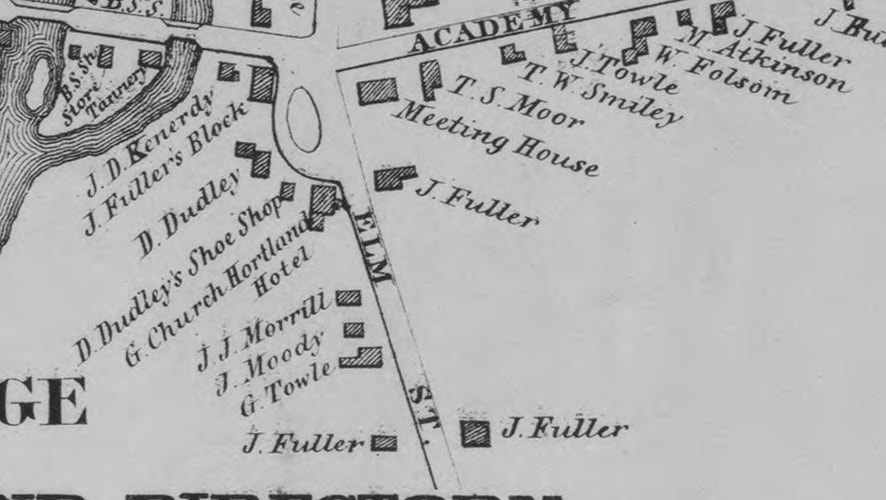
Hartland Village – 1860 Somerset County Map
*
Built around 1827 on the corner of Elm Street at Warren Square, this building would eventually become most commonly known as the Hartland House although it did operate under various other names over the decades. While details of its early history are currently unknown, it served as a hotel, tavern and stage coach stop for passengers traveling along the Lancey Stage Coach Route from Pittsfield. A large livery stable to service the stage coach teams was also attached to the Elm Street side of the building.
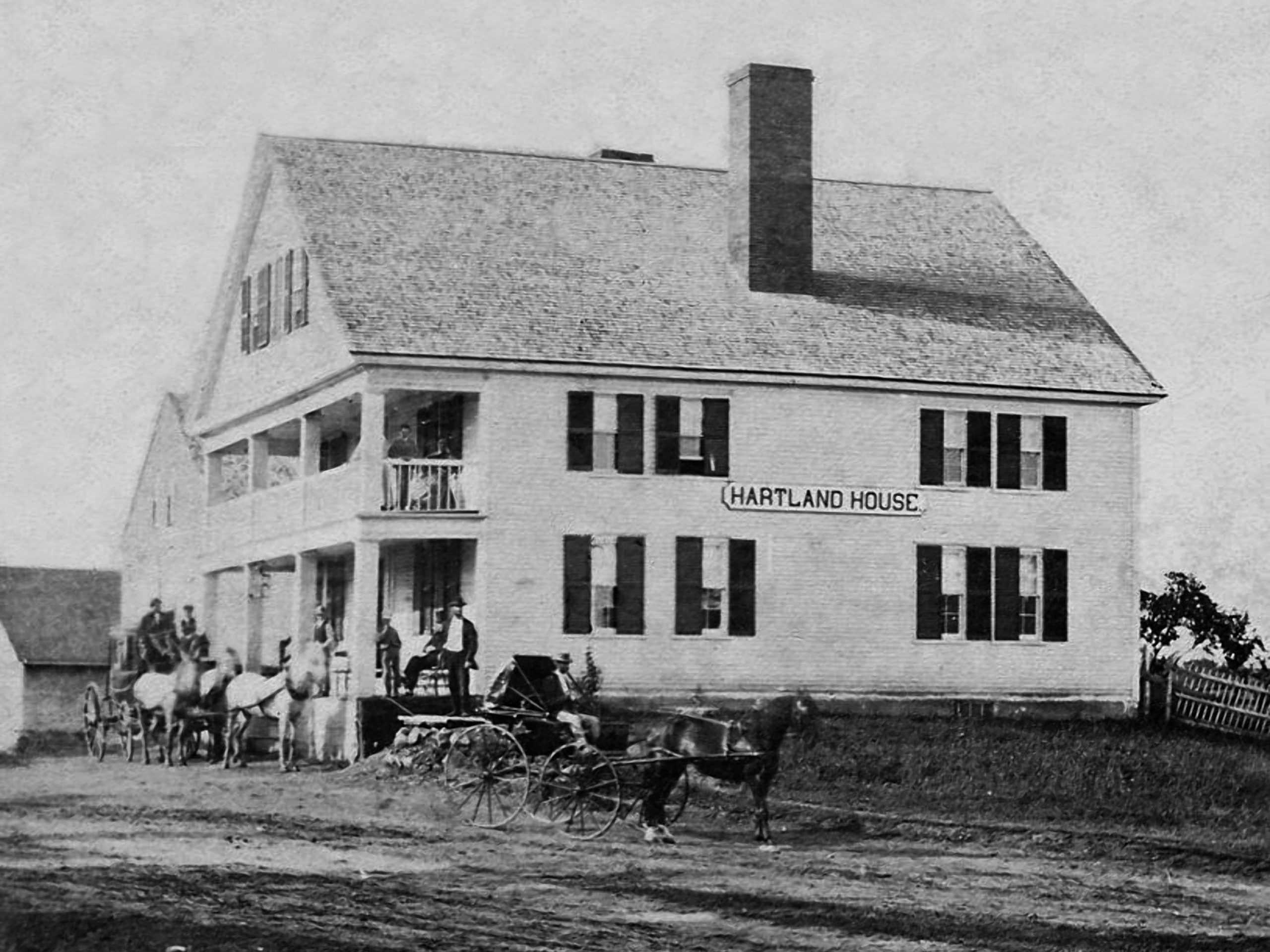
Hartland House – c1870
*
The Baptist Church was built in 1842 on the corner of Elm Street & Academy Street and was originally known as the St Albans Baptist Church. Soon after the annexation of the area to Hartland, its members voted to become independent from their St Albans associates and formerly organized as the Hartland Baptist Church in 1847.
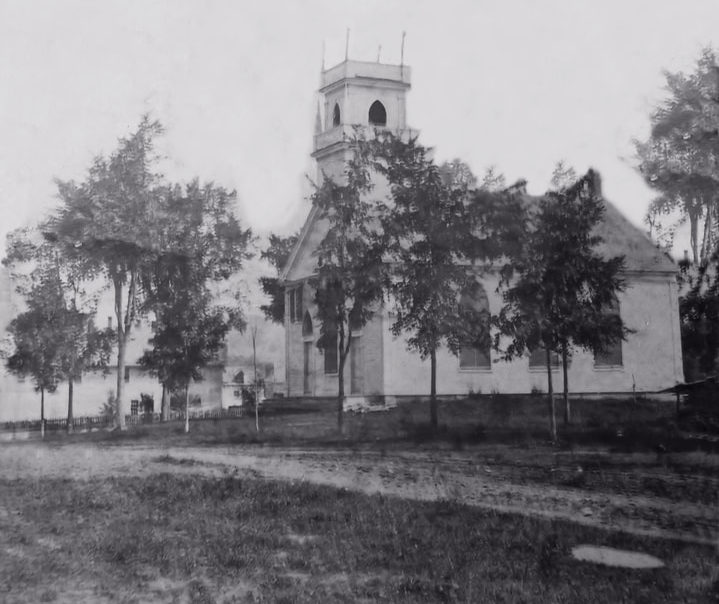
Baptist Church – c1877
*
James Fuller, Jr (1819-1895) and his wife Sarah Ann Underwood (1822-1891) moved from West Hartland into the Village sometime in the 1840s following his purchase of a large tract of land along Elm Street. His sprawling homestead next to the Baptist Church included a large barn, out buildings and pasturing land south of his residence. James is a son of original West Hartland settler James Fuller, Sr and his 1st wife Rebecca Lancey.

James Fuller, Jr Elm Street Residence – c1877
*
Fuller purchased the former Sewell Prescott, Jr store in Warren Square and opened his store which soon included the Post Office. Fuller was joined in business about 1865 by Andrew H. Buck operating as the Fuller-Buck General Store until it burnt down in late 1878. Buck then opened his own stove & tin shop off Main Street on the Sebasticook River Island and Fuller built a new smaller store block at the same Warren Square location.
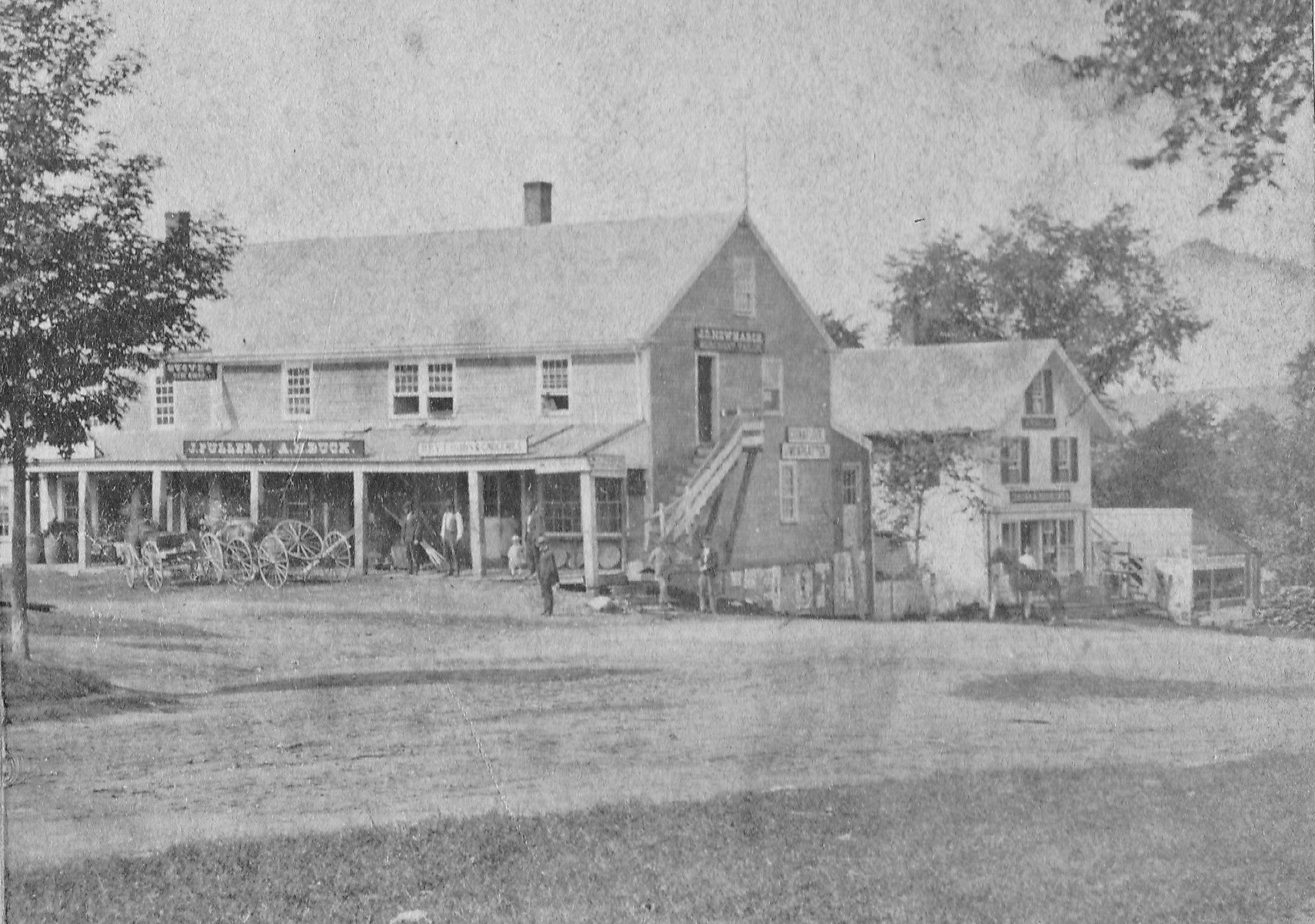
Fuller & Buck General Store at Warren Square – c1877
*
An edited stereoscopic photograph taken from the Baptist Church Steeple around 1877 affords an early bird’s eye view of Elm Street. The first set of buildings on the left is James Fuller, Jr’s homestead and his expansive tract of land leading to his son Henry C. Fuller’s residence. To the right is the Hartland House and its Livery Stable followed by John J. Morrill’s homestead and several others houses. At the time, John Morrill operated the J. J. Morrill Axe Manufacturing Company on Main Street.
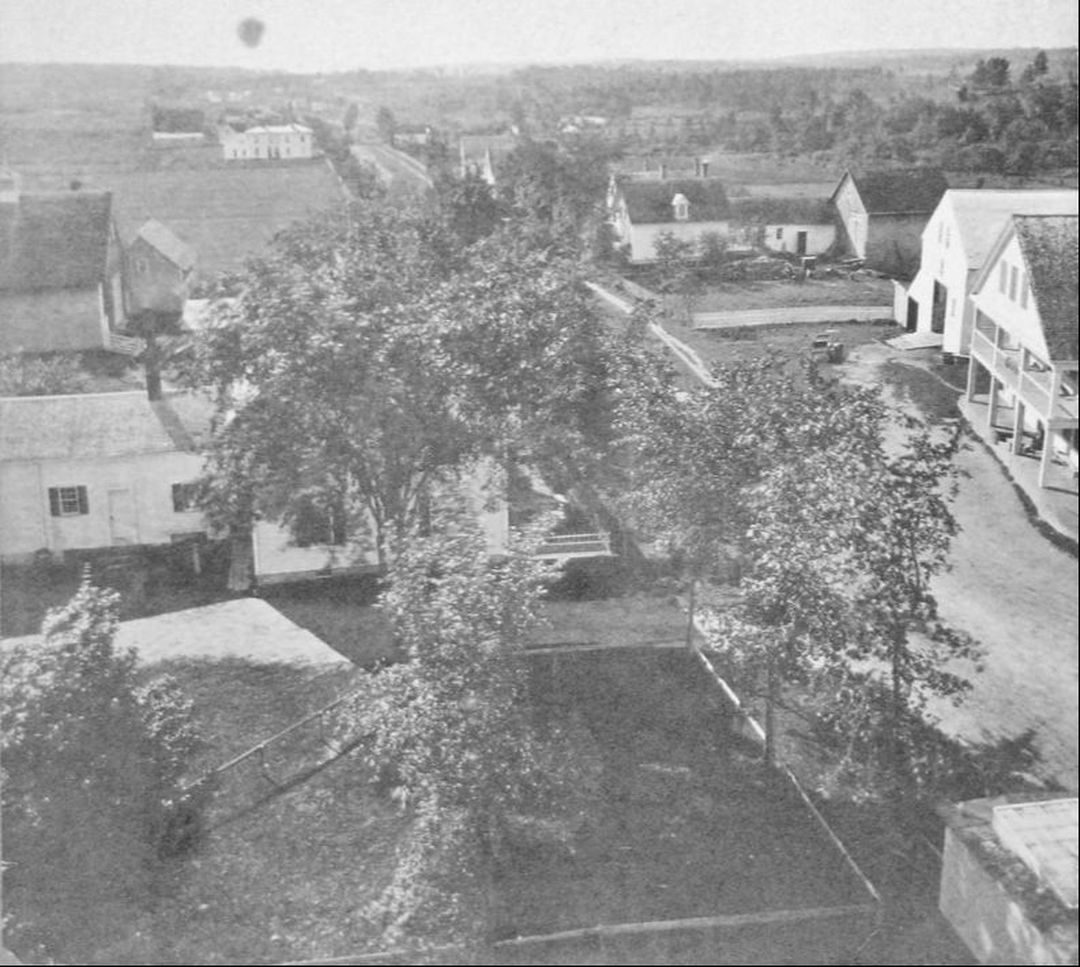
Elm Street from the Baptist Church Steeple – c1877
*
Among those also residing on Elm Street as seen from the original 1883 Map of Hartland Village were James Fuller, Jr’s son Henry C. Fuller & his wife Mary Linn and John Larrabee who married Elizabeth Fuller, she the youngest half-sister of James Fuller, Jr.
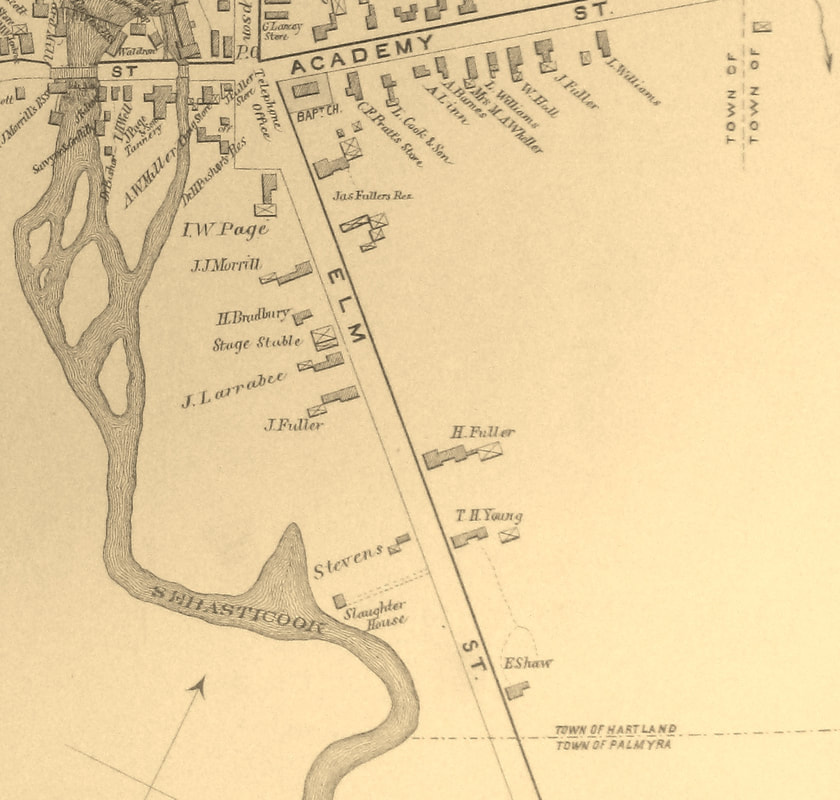
Hartland Village – 1883
*
Most of Elm Street as seen from the original 1896 Map of Hartland Village.
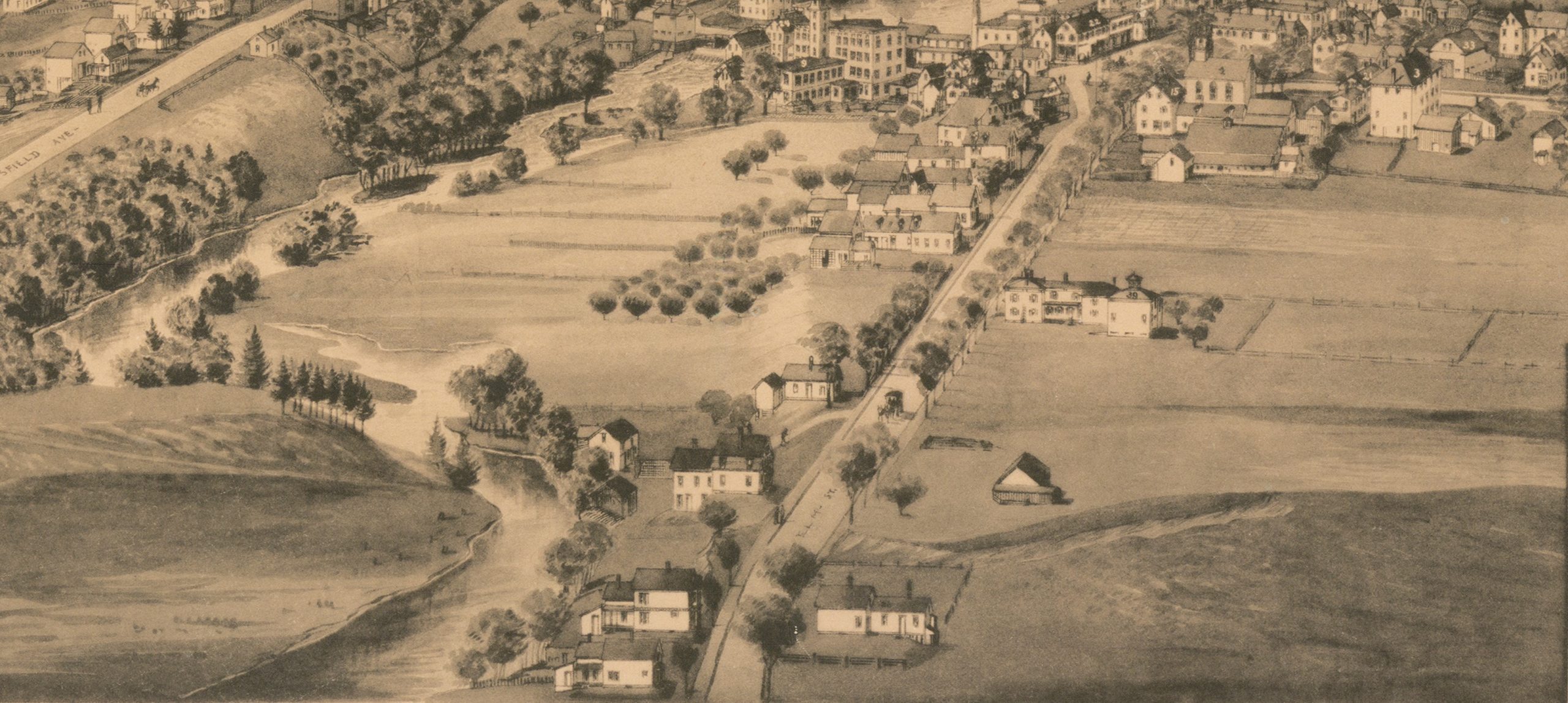
Hartland Village – 1896
*
At the 1897 Town Meeting, citizens of Hartland voted to accept an updated list of names for the existing streets in the Village including, “From said (Warren) square to the Palmyra Town Line going south; Elm Street.”
*
Dr. Sarah Jennie Fuller (1852-1931), the 4th of 8 children of James Fuller, Jr & Sarah Underwood born September 15, 1852 and raised in Hartland at her parents’ homestead on Elm Street. She graduated from Hartland Academy then attended Salem Normal School in Salem, Massachusetts. She then attended Boston University School of Medicine where she received her degree as a Doctor of Medicine in 1882. After practicing medicine in St Paul, Minnesota for the next few years, she returned to her parents’ home in 1888 and carried on her homeopathic medical practice in Hartland for the next 20+ years.
Following James’ death in 1895, Dr. Jennie took over her father’s Elm Street residence. She was joined in 1902 by her recently widowed younger sister Harriet Underwood (Fuller) Baker and the two remained living at the house until she retired from medical practice in 1920. Jennie passed away on July 9, 1931 at 79yrs old and was interred in her parents’ lot at Fullers Corner Cemetery joined there by her sister Harriet upon her death on October 14, 1941.
Along with her successful medical practice, Dr. Jennie Fuller was well known as a fierce advocate for woman’s rights and was a prominent figure in Maine’s Suffragette Movement as well as Hartland. She was involved with local town affairs and according to reports of the day, never reluctant to express her opinion on all matters.
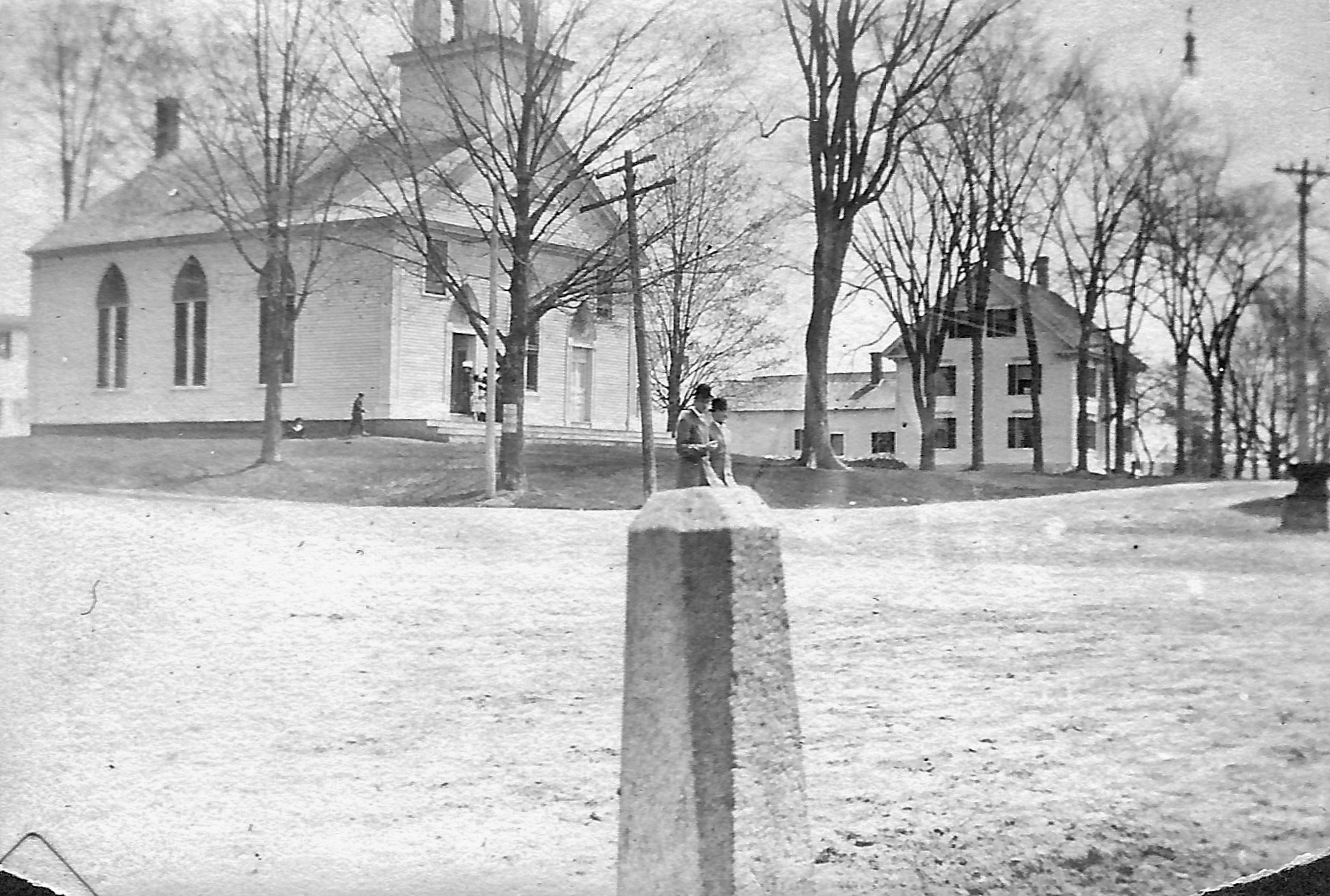
Former James Fuller, Jr Elm Street Residence next to Baptist Church
*
Vincent Clay Goforth (1898-1977) had been an undertaker when he moved from his native Missouri to Hartland soon after 1920 where he was later joined in the area by his brothers Robert & George Goforth. Vincent married Hartland native Chrystal McPheters in 1923 and soon after they rented the former James Fuller, Jr residence from Dr. Jennie Fuller residing there at the time of the 1930 Census where he operated Goforth’s Funeral Parlor & Ambulance Service. Following Dr. Jennie’s death in 1931, Carl Randlett purchased the house then sold it to Vincent in 1932. By 1935, Vincent & Chrystal moved their family to the (Webb) Ridge Road in St Albans but he retained his funeral parlor business on Elm Street until about 1942 when Dr. Charles E. Norcross, D.D.S. of Hartland purchased the residence.
Dr. Norcross then rented the house to Donald Shorey of Pittsfield who had been operating his first funeral parlor in Hartland at the Davis & Webber Block in Warren Square since 1934. In 1945, Dr. Norcross sold the house to Millard Cookson and Shorey moved his funeral parlor across the street into the 1st floor front unit of the Hartland House owned by Lewis H. Barden at the time until building a dedicated funeral parlor on Mill Street in 1956.
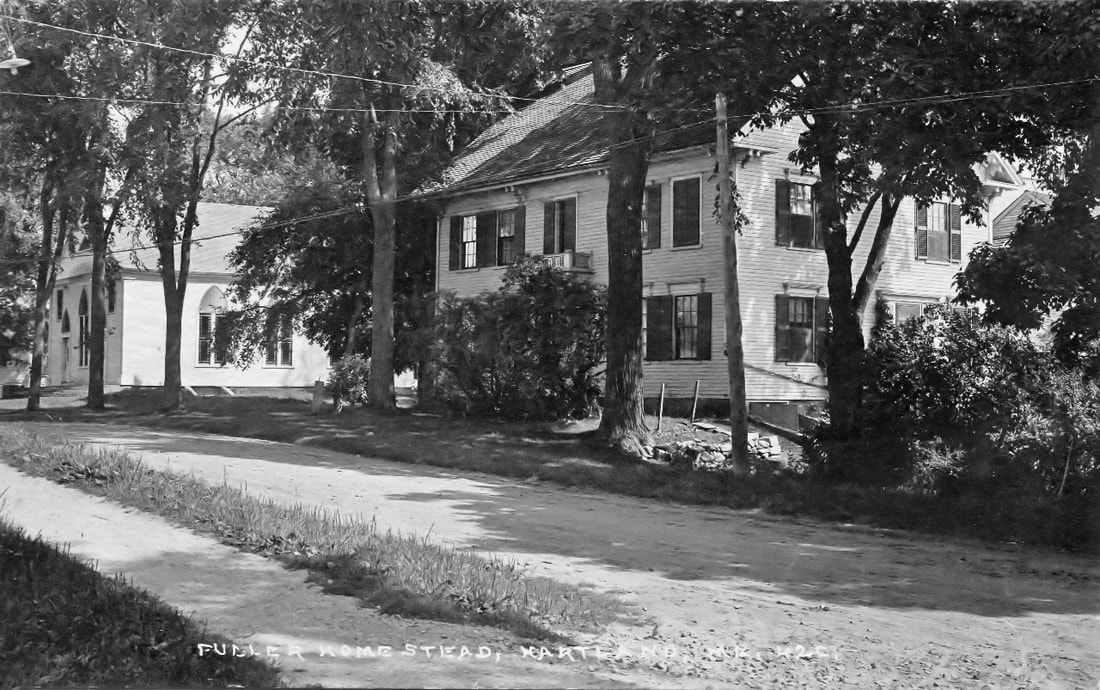
Former James Fuller, Jr Elm Street Residence
*
Lloyd Frederick Hubbard, Sr (1910-1977) eventually purchased the former James Fuller, Jr residence. “Red”, as he was known locally, worked for the Hartland & St Albans Telephone Company for many years and was General Manager for the company during its conversion to a new direct dial system in 1957.
Following Red’s death, the Baptist Church purchased the house in 1980 and moved their Parsonage from lower Elm Street into the building. They soon established the Hartland Christian School with their own state accredited program, teachers and classrooms as well as a new gymnasium built next to the Parsonage.
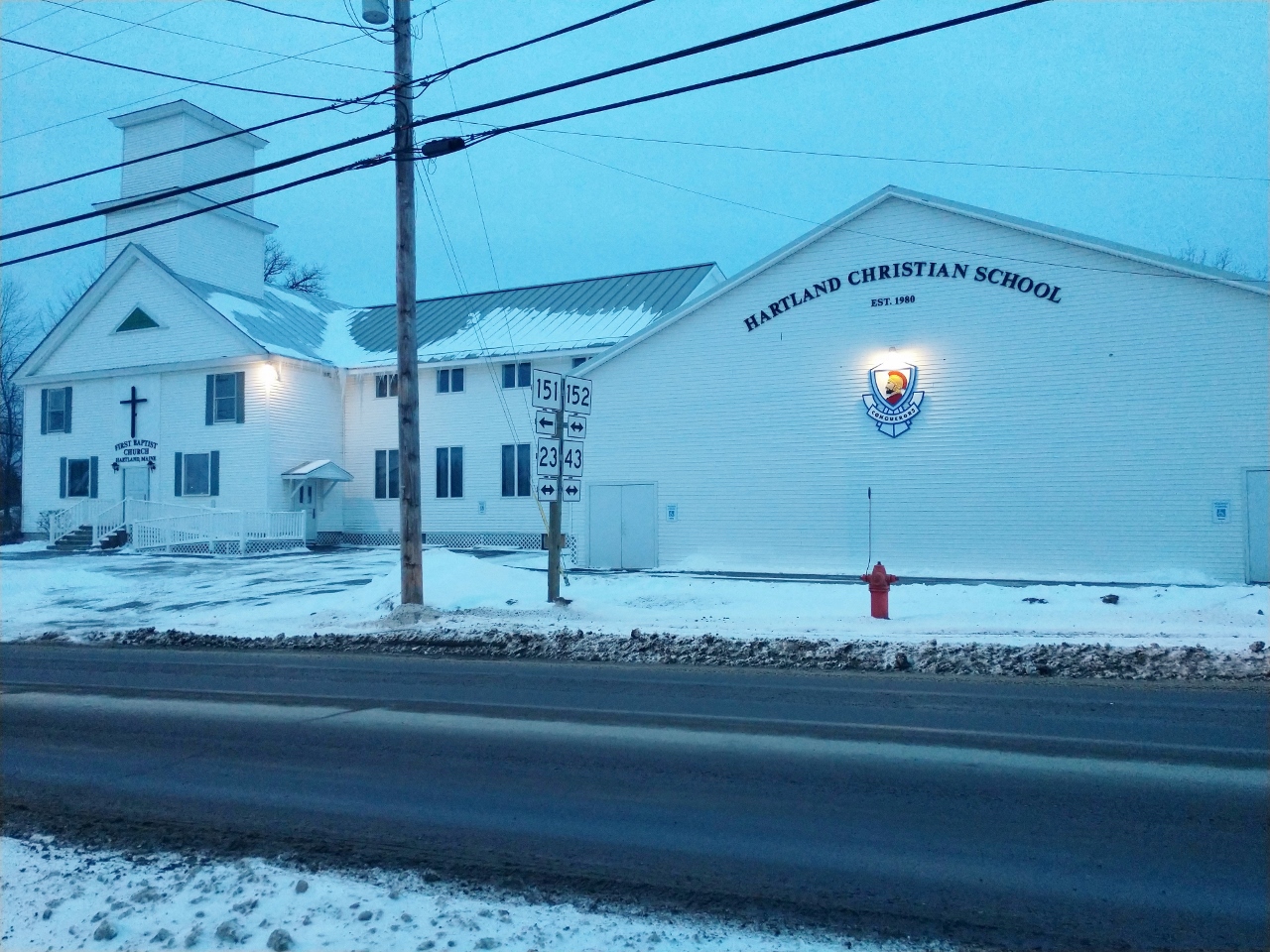
Hartland Christian School Gymnasium – 2020
*
Further details for Henry & Mary (Linn) Fuller may be found on the dedicated Fuller Mansion page.
Henry Clay Fuller (1854-1903) was the 5th of 8 children of James Fuller, Jr & Sarah Underwood born February 12, 1854 and raised in Hartland at his parents’ homestead on Elm Street. He attended Hartland Academy and worked at his father’s store in Warren Square as a young man. On December 25, 1874 he married Mary Isabelle Linn (1856-1933), daughter of Archibald Linn & Grace Wilson. As noted in his obituary, Henry was hired by Mr. Linn at the Linn Woolen Mill soon after the marriage. “He was taken into the Linn Office in a confidential capacity, and as he became an expert in wool manufacturing, relieved Mr. Linn of the cares of management for many years.” Upon the death of Archibald Linn in 1889, Henry soon became President of the newly reorganized Linn Manufacturing Company with Mr. Linn’s written support as noted in his Will.
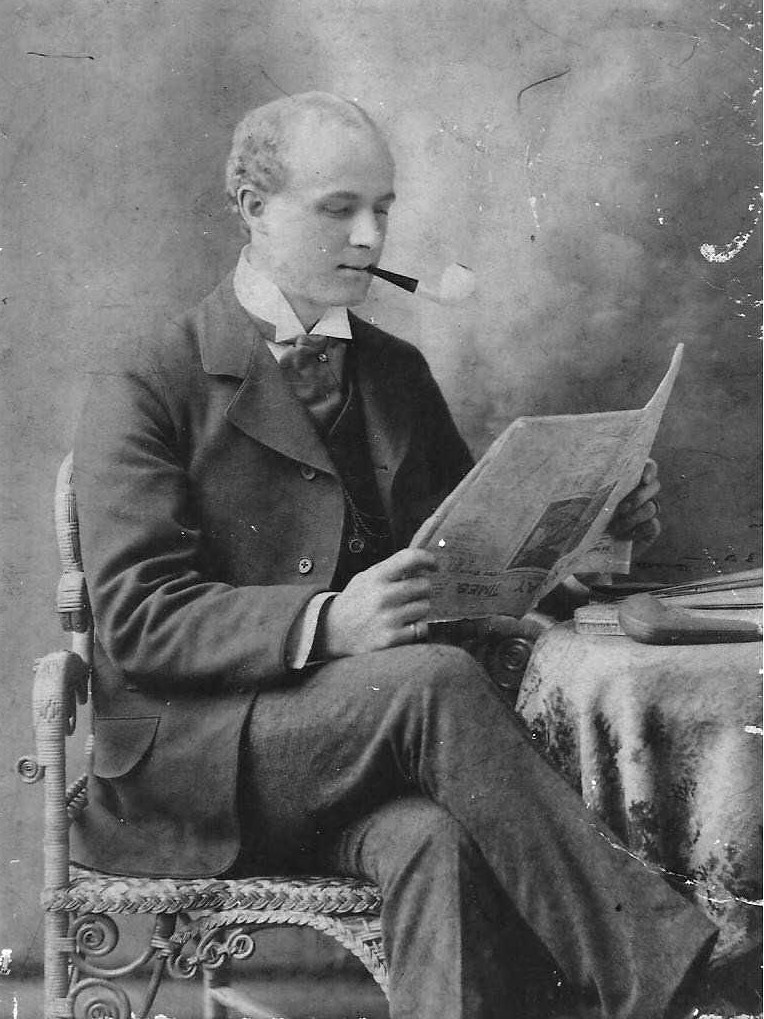
Henry Clay Fuller
*
Henry & Mary resided on Elm Street at their large homestead while they were married as noted on the original 1896 map as the “H.C. Fuller Residence” (#39). A daughter and 5 sons would be born to them between 1875 and 1889 but 2 of their sons would not survive past infancy.
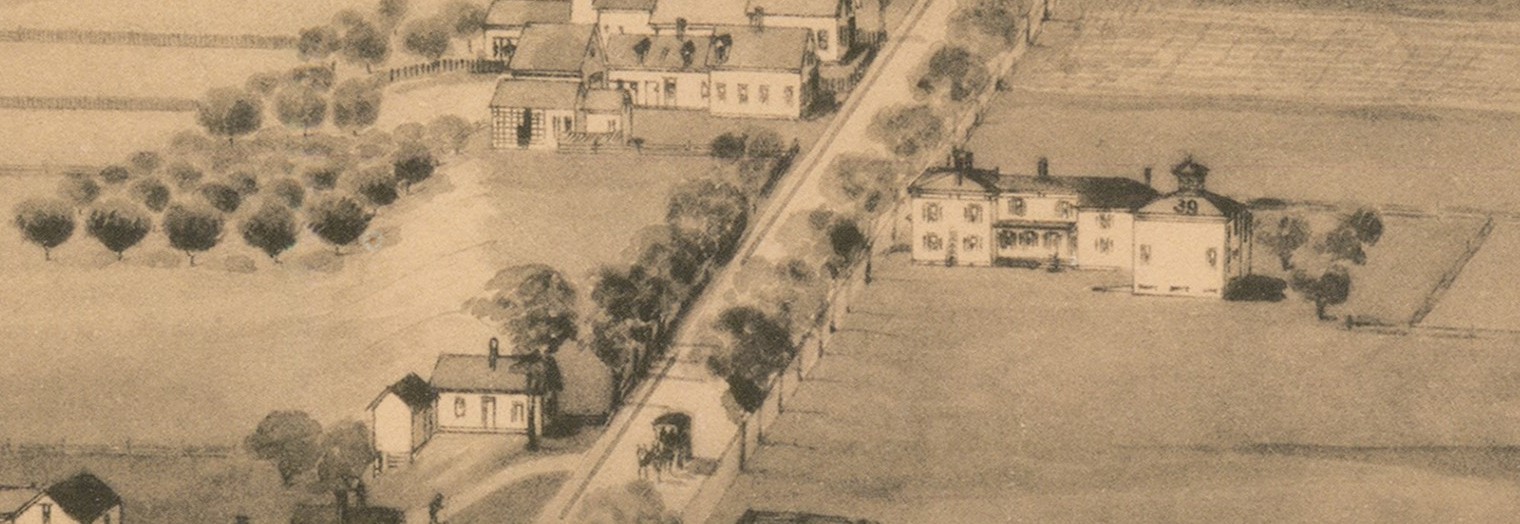
Henry & Mary (Linn) Fuller Elm Street Residence – 1896
*
In 1901, Henry Fuller expanded operations of the Linn Manufacturing Company with a new business operating as the Fuller-Osborne Company along with his son-in-law George Teel Osborne and his brother-in-law Thomas Archibald Linn. The new company’s primary focus was in clothing production with its nationally famous Sebasticook Walking Skirt soon leading its numerous offerings but it also had several other business interests including real estate, newspaper printing and a greenhouse operation.
Henry Fuller built his first greenhouse in 1901 on Elm Street across the street from their residence under the business banner of the newly formed Fuller-Osborne Company operating as “Scotch Thistle Greenhouses” under Henry’s personal guidance.
“The Scotch Thistle Greenhouses, which have been built by the Fuller-Osborne Company in this village last season are now completed and the growing of flowers of all kinds is progressing finely. The owners of this new enterprise announce that they are now ready to supply anything in this line at short notice. The houses are under the charge of a florist who has had much experience in this work and he knows how to produce the daintiest and sweetest flowers imaginable.” ~ Pittsfield Advertiser – 1902
*
In the prime of his successful rise as a highly respected leader in manufacturing and business, Henry was stricken with Tuberculosis. He passed away on March 11, 1903 at 49yrs old at Boston City Hospital where he gone for advanced treatment. His funeral at their Elm Street home was one of the largest ever held in Hartland and every business in town closed during the services. Henry was survived by his wife Mary and sons James Elmo Fuller, Guy Goss Fuller & Elmer Linn Fuller.
In the spring of 1904, Mary began having a new home constructed on the 3 acre Scotch Thistle Greenhouse lot across the street from the house where she had lived for most of her married life since 1874. Mary was the 5th of 6 Linn children and was born November 18, 1856 in a part of Leicester, Massachusetts known as Cherry Valley after her parents had come from Scotland in 1848. She came with her family to Hartland where her father had built the original Linn Woolen Mill in 1863 and was raised at her parents’ home on Commercial Street with her 2 surviving older siblings Thomas Archibald Linn & Robert Wilson Linn.

May 20, 1904
*
The exquisite new 10 room house would commonly be referred to locally as “Fuller Mansion” however Mary preferred the lot’s original and more eloquent title as “Scotch Thistle” when referring to her homestead as noted in several future newspaper articles.
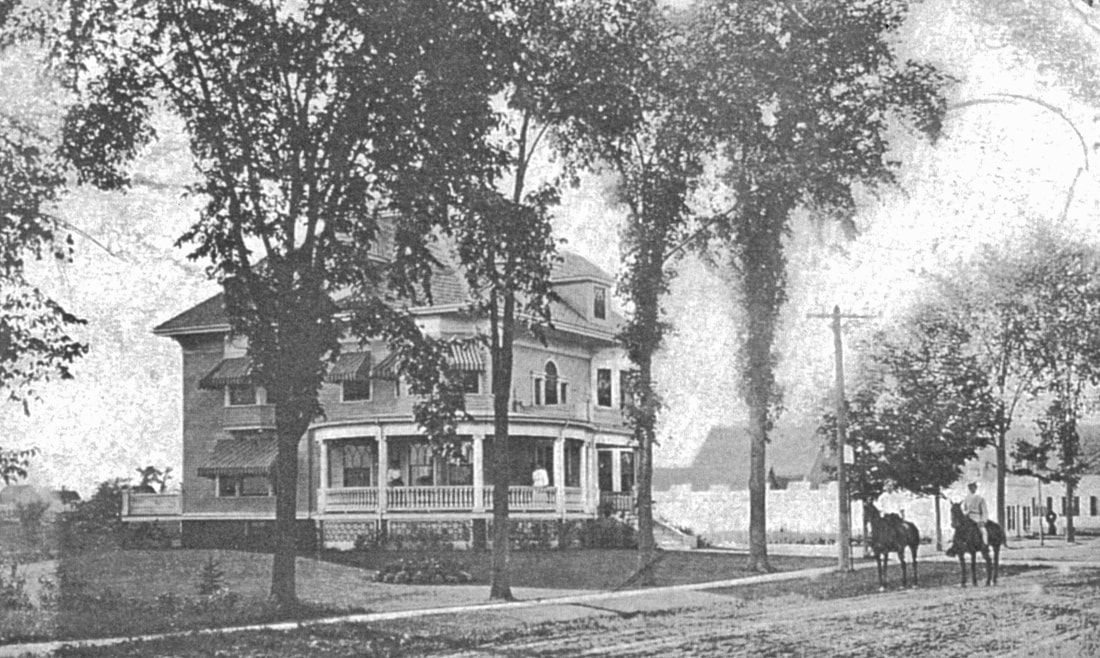
Mary Isabelle (Linn) Fuller’s New Elm Street Residence
*
Following the estimated completion of her new home in late 1904, Mary resided there with her son Elmer Linn Fuller who remained there until he married Jean Osborne Palmer in 1911 and moved to Massachusetts soon after. Her son James Elmo Fuller had married Bertha Harris Cherrington in 1903 and the newlyweds also joined her at the house where their 2 oldest of 4 children were born in 1905 and 1911 before moving to Massachusetts by 1914. Mary’s other surviving child Guy Goss Fuller had married Edith Lurancy Fuller in 1903 and moved to Lewiston before they moved to Massachusetts soon after 1910.

Fuller Mansion aka Scotch Thistle
*
Mary remained at the house after her sons and their families had moved to Massachusetts but often traveled there over the years to visit as she continued her involvement with several local civic and social groups. Mary often spent winters in Massachusetts while closing up her Elm Street residence for the season.
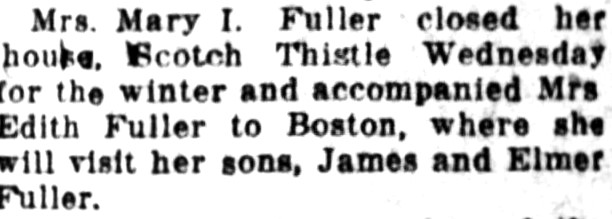
December 3, 1929
*
In mid-1932, lingering illness prompted Mary to close up her home in Hartland for good and move to Wollaston, Massachusetts to stay with her son James Fuller and his wife Bertha Cherrington. Mary passed away in Quincy in 1933 and is interred with Henry at Pine Grove Cemetery.
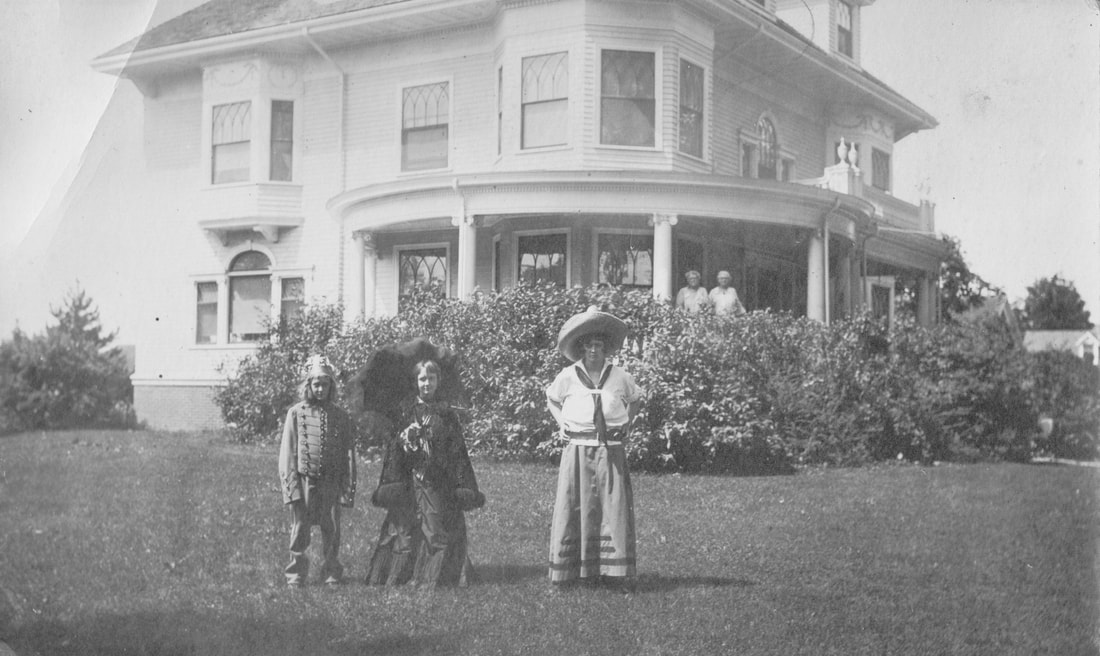
Fuller Mansion
*
The Fuller Mansion with its 3 acre lot were left to Mary’s only surviving children Elmer Linn Fuller and James Elmo Fuller. Elmer conveyed his 1/2 interest in 1940 to James & Bertha who moved back into the house later that same year. James passed away in 1947 and Bertha remained in the house for the next few years.
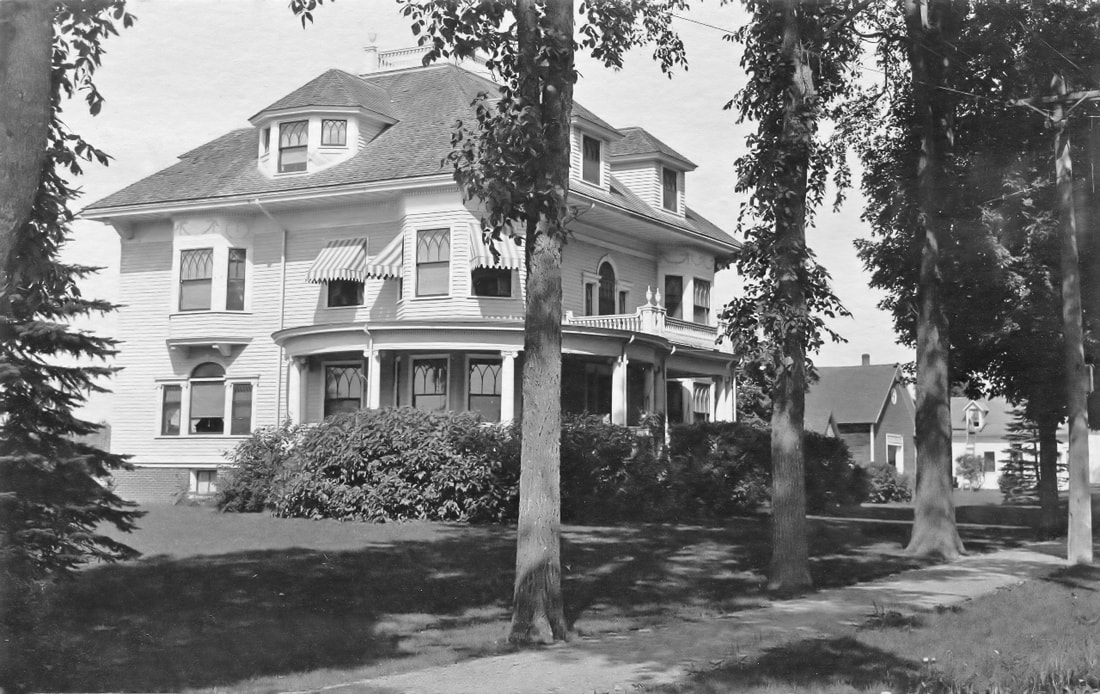
Fuller Mansion
*
Many Hartland locals recall Bertha giving piano lessons on the pair of pianos she had in the 2 front rooms. A 1956 newspaper article highlighted Mrs. Bertha (Cherrington) Fuller’s career as an accomplished pianist.

Bertha (Cherrington) Fuller Article – 1956
*
Bertha took a very bad fall in 1959 when she was about 76 years old and was confined to a nursing home in Skowhegan until her death in 1968. In January of 1960, she transferred ownership of the house to her son, retired U.S. Marine Corps Brigadier-General Donald Walker Fuller, Sr, who resided in Philadelphia at the time.
In April of 1962, Donald sold the Fuller Mansion to Linwood & Marion (Ireland) Vanadestine who converted it into a boarding home for the mentally challenged operating as Vanadestine’s Boarding Home. After a new exterior coat of paint, the house was often referred to locally as the “Pink Mansion” due to its new vibrant color.
*
It was purchased by Connie (Bunker) Nelson-Brown about 1978 who continued its use as a boarding home operating as The Ensign Boarding Home for many years.
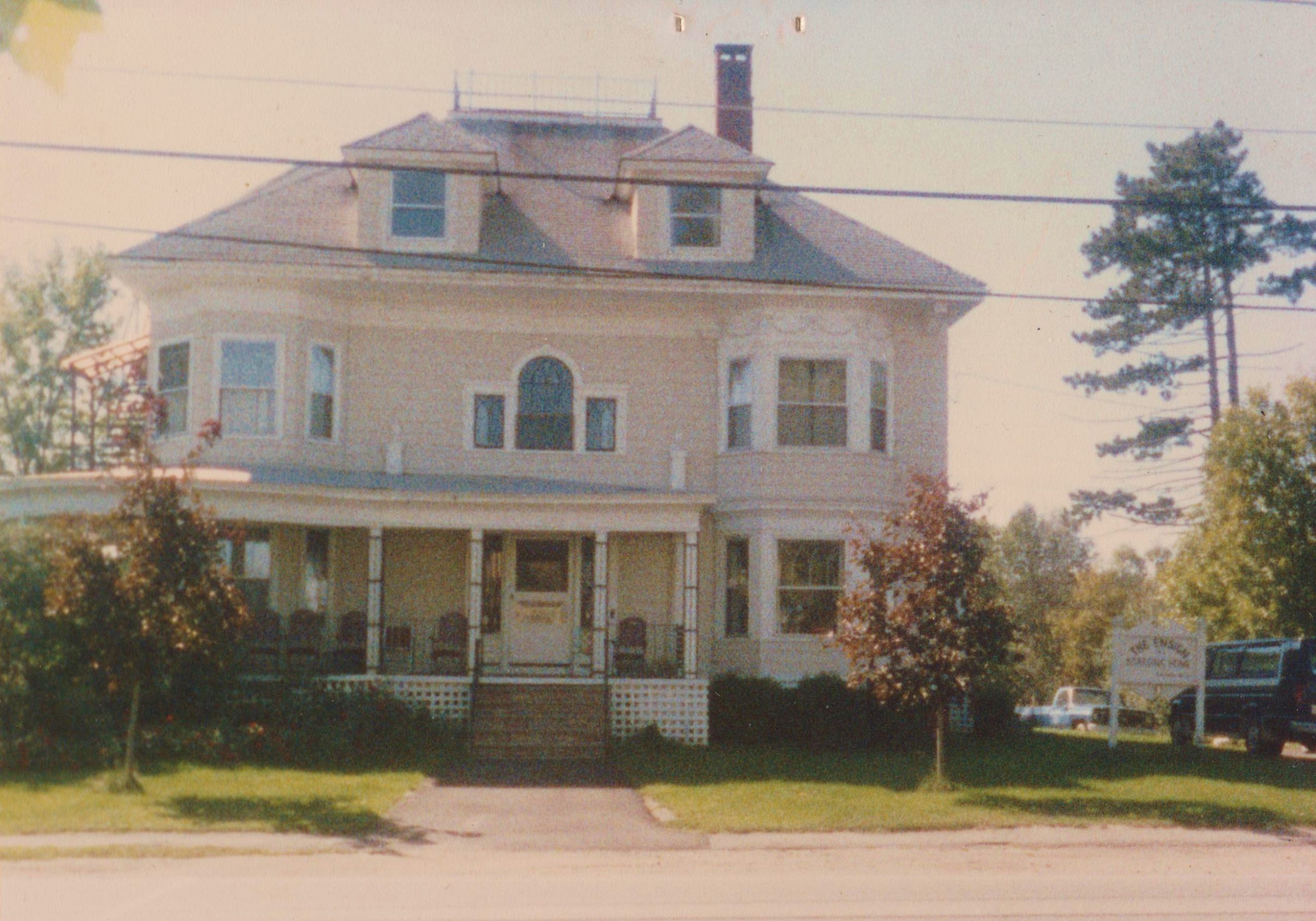
Former Fuller Mansion as The Ensign Boarding Home – 1987
*
Dr. Charles Avery Moulton (1860-1946) was born in Concord, Maine. He attended Westbrook High School then graduated from Bowdoin Medical School in 1885. He practiced medicine for a year in North New Portland before moving to St Albans in 1886 where he continued his medical practice. In 1893, feeling the need for better means of communication in the areas he served, Dr. Moulton and several local businessmen began the St Albans Telegraph Company. In 1894 Dr. Moulton decided the telephone was a better communication device and established the St Albans & Hartland Telephone Company with 12 original subscribers including several in Hartland.
In 1897, Dr. Moulton moved to Hartland to be more centrally located to his numerous patients in the St Albans, Palmyra & Hartland areas while continuing his operations of the St Albans & Hartland Telephone Company in St Albans. While their new house was being built, they resided next door at the former John J. Morrill Homestead. Dr. Moulton and his wife Abigail A. Lunt (1861-1940) were living at their new home on Elm Street at the time of the 1900 Census with their daughter Ina Mae Moulton (1891-1960) the year before the birth of their son Arthur Lunt Moulton (1901-1985).
In 1903, Dr. Moulton re-organized his telephone company business and incorporated as the Hartland & St. Albans Telephone Company in 1903 with the new company’s office located on the 2nd floor of his Elm Street residence. The new company continued to operate its lines independently for a short time until December of 1904 when The New England Telephone Company announced they had assigned a portion of their service territory to the newly formed telephone company.
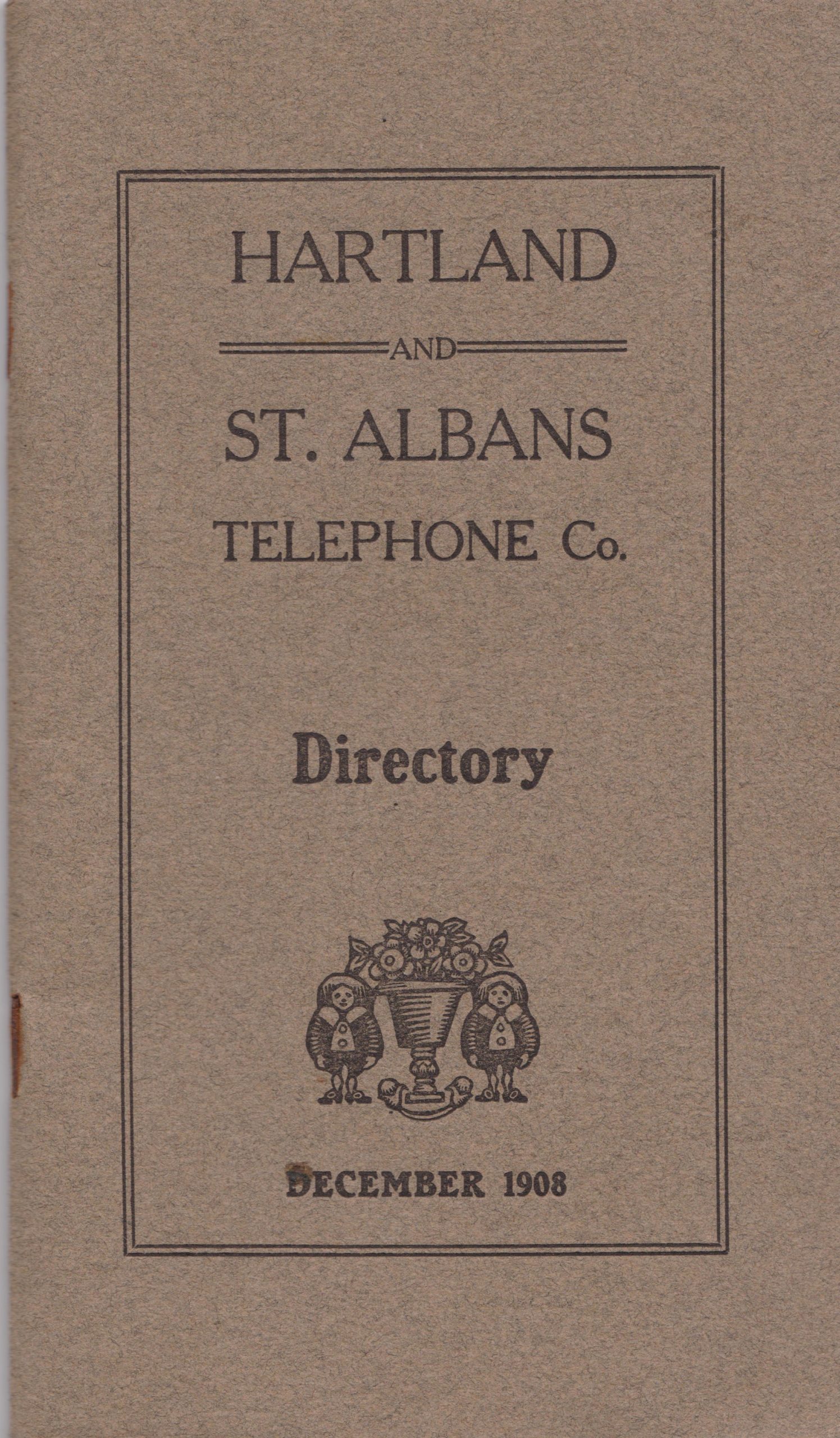
Hartland & St. Albans Telephone Company Directory – 1908
*
Following his move to Hartland, Dr. Moulton became a leading entrepreneur in the new era of telephone communication and electrical power distribution. He lived out the rest of his life in Hartland serving as a local family doctor, hospital administrator, businessman and an active member in town affairs until his death in 1946. Dr. Moulton’s contributions to Hartland and the surrounding communities are immeasurable by any standard. During his 50+ years of medical practice he served the people of Hartland, St Albans & Palmyra where he performed regular house calls to care for the sick, delivered children and made death pronunciations.
Along with his telephone company, he was also founder of the Hartland Electric Light & Power Company, founder of Scott-Webb Memorial Hospital where he also served as Administrator and Resident Physician. He served as a Hartland Town Selectman, Hartland School Physician, Hartland School Committee Member and Trustee of the Hartland Public Library . He was a 50 Year Member & Master of the Hartland Chapter of the Corinthian Lodge, Noble Grand of the Hartland Chapter of the I. O. O. F., and President of the Maine Medical Association as well as being a devoted husband and father. Dr. Moulton is interred at Pine Grove Cemetery with his wife and 2 children.
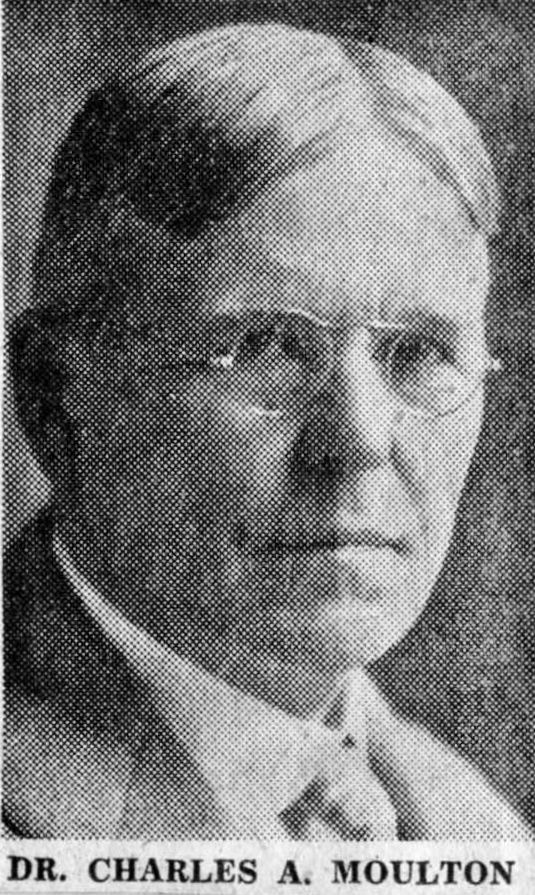
*
Around 1913, a creamery was built at the railroad yard in Hartland operated by the D. Whiting & Son Creamery Company who owned numerous creameries in the area. Following its closure around 1922, a new creamery was built on Elm Street in 1924 by A. G. Braley & G. F. Braley of Somerville, Massachusetts who had purchased several creameries in the area including Winslow, Burnham, Albion and Detroit operating as Elm City Creamery. The new creamery sat back off Elm Street across the street from the Fuller Mansion before it was razed and replaced by new houses. Hartland native John F. Connelly was one of the first Managers of the Elm City Creamery’s Hartland Branch working there in 1926 before he went to work for H. C. Baxter Brothers Canning Company and eventually the Hartland Tanning Company.

Bangor Daily News – November 29, 1924
*
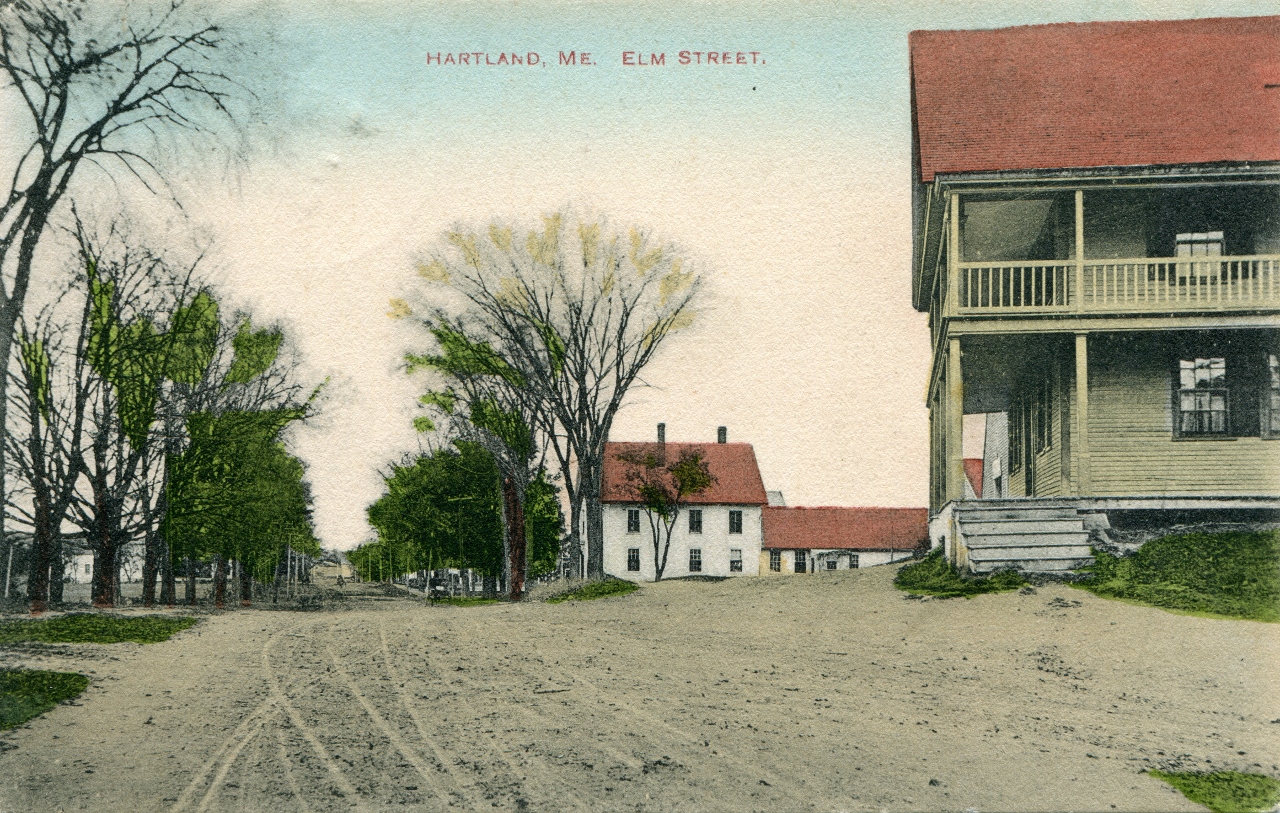
Elm Street from Warren Square
*
Edmond Lee Fuller (1865-1930) and his 2nd wife Lillian Adelaide Clark moved into their Elm Street home by 1920 with their daughter Angilee Lillian Fuller. Following Edmond’s death, Angilee and her newly wedded husband Harold Emery Seekins moved to St Albans with their infant son Edmond Harold Seekins and were joined there by Lillian. The house was purchased soon after by Owen Rowe and his wife Beulah Lancaster.
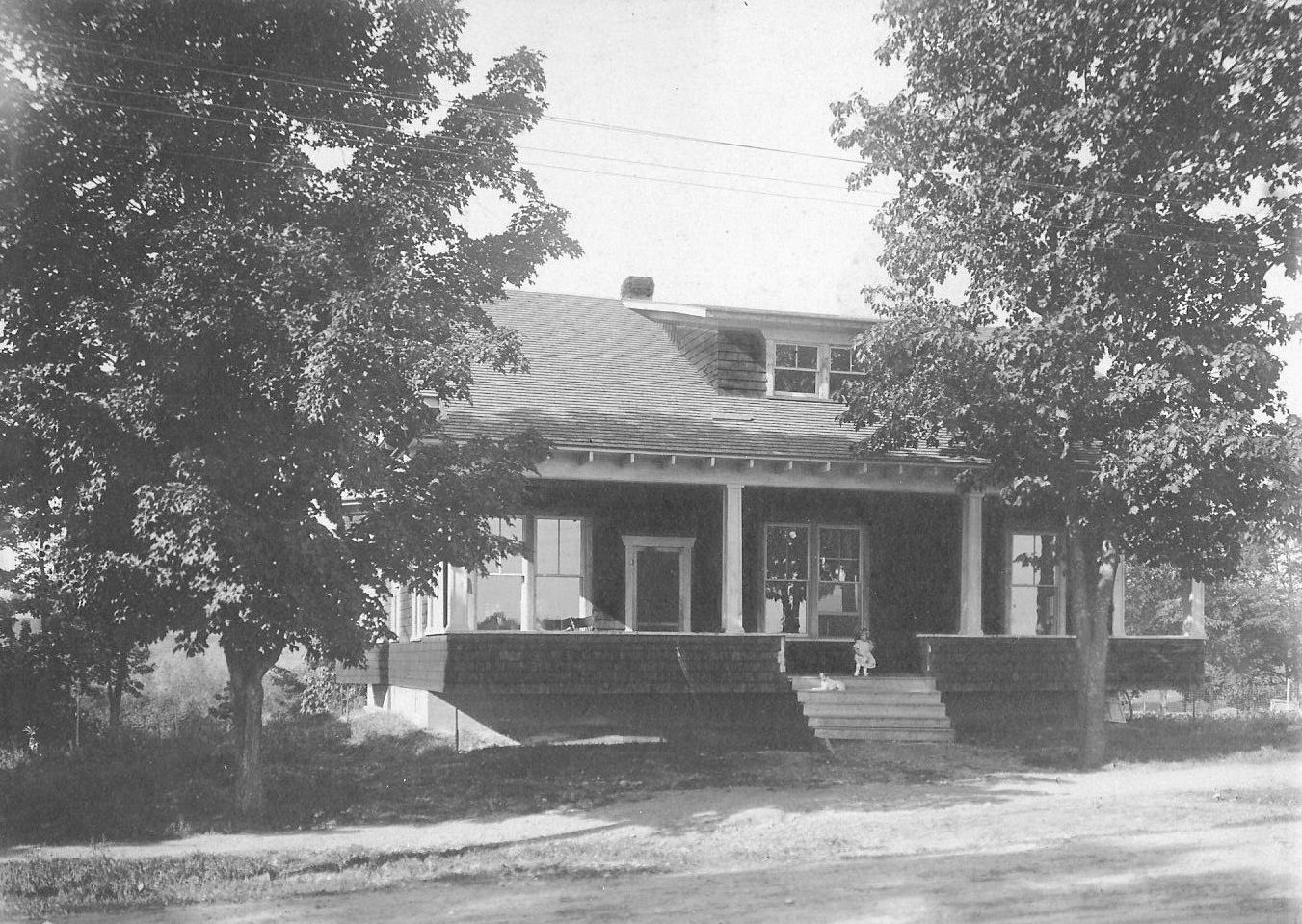
Edmond Lee Fuller Residence
*
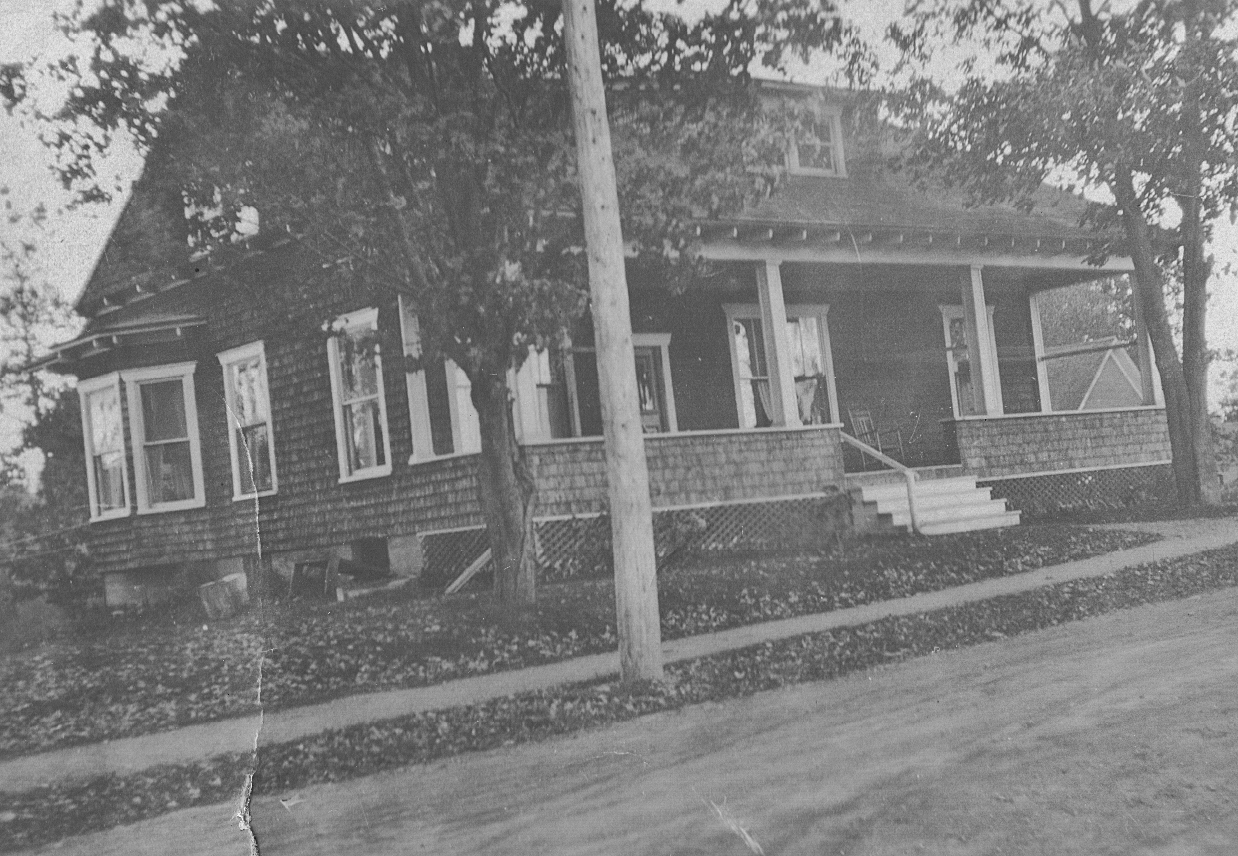
Edmond Lee Fuller Residence
*
By 1943, several new houses had been built along Elm Street.
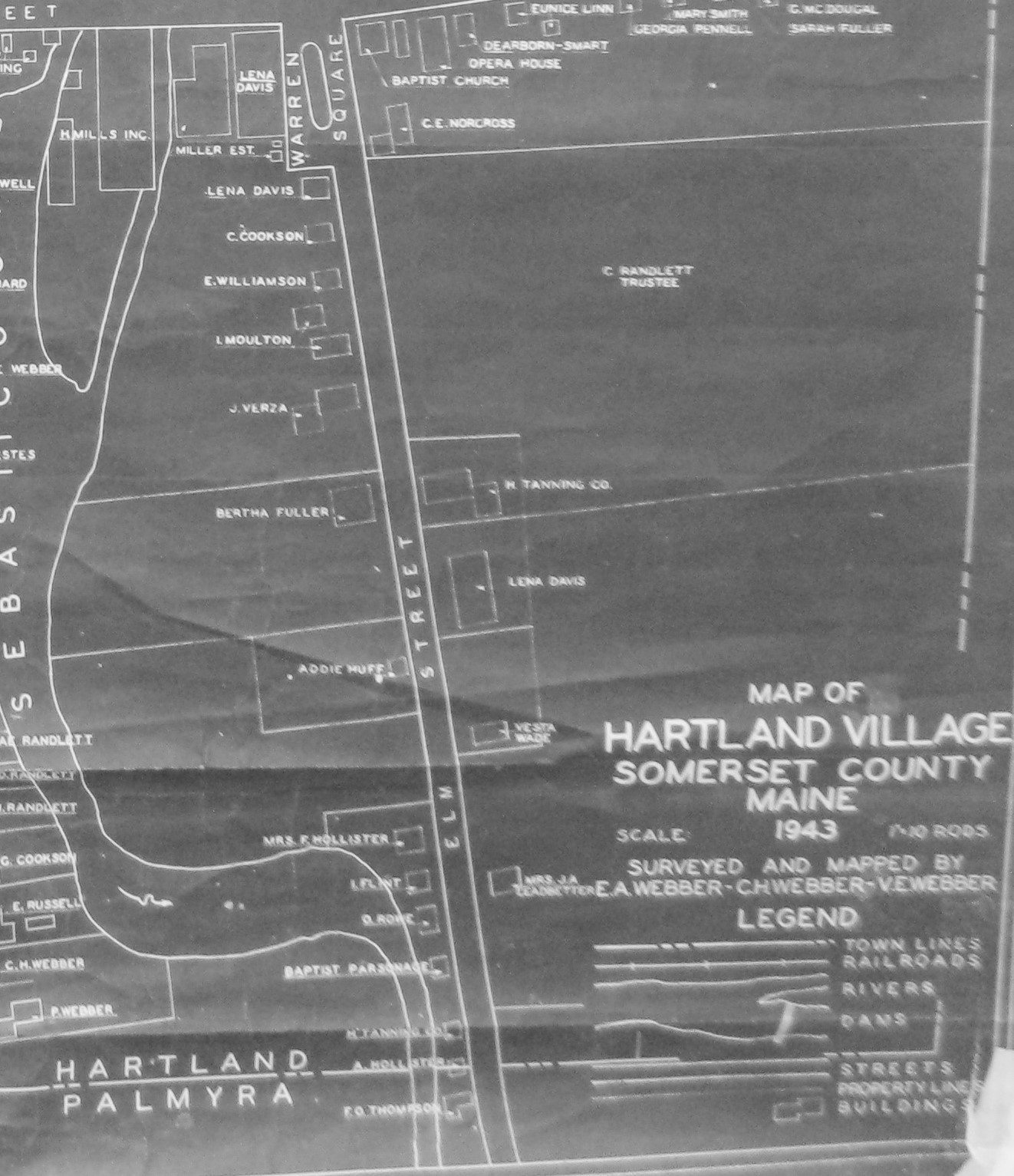
Elm Street Residence Ownership – 1943
*
Numerous schoolhouses were located throughout the Village, North Hartland and West Hartland for students attending Primary through 8th Grade in the Hartland School System since its early settlement. As many as 14 separate school districts which existed over the decades were eventually funneled down into a handful of rural schoolhouses in the early 1910s before the last standing rural school at Fuller’s Corner was closed in 1942 and students from every region of Hartland attended school in the Village.
*
Click the link below for a complete history of Hartland Common Schools
Hartland Common Schools
*
Overcrowding had been an ongoing issue for the Hartland School Department for many years. The eventual closure of all its rural schools further intensified the ongoing need for a larger, dedicated schoolhouse for its elementary grade students.
In 1949, the citizens of Hartland voted to build a new schoolhouse and in April of 1950 construction began on the Hartland Consolidated School on a 9-1/2 acre lot which was part of the original James Fuller, Jr homestead. The lot was purchased from the Estate of Dr. Jennie Fuller which Carl Randlett was Trustee.
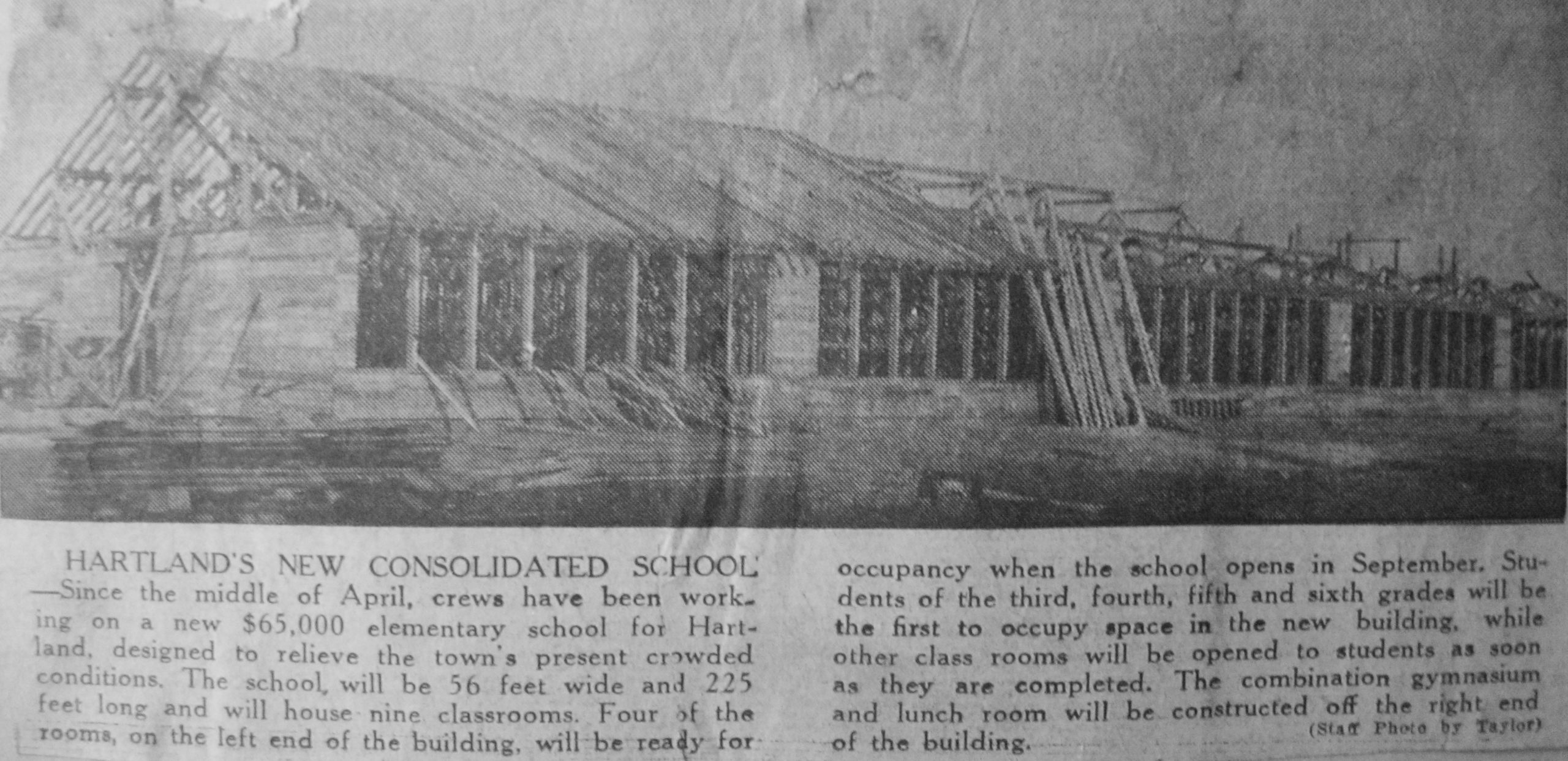
Building the Hartland Consolidated School – 1950
*
The new Hartland Consolidated School served Primary through Grade 8 area students for the next 18 years until Nokomis Regional High School opened in 1968. With its high school grade students now attending Nokomis, 7th & 8th Graders began attending school at the former Hartland Academy renamed as Hartland Junior High School while the Hartland Consolidated School housed Primary through 6th Grade students.
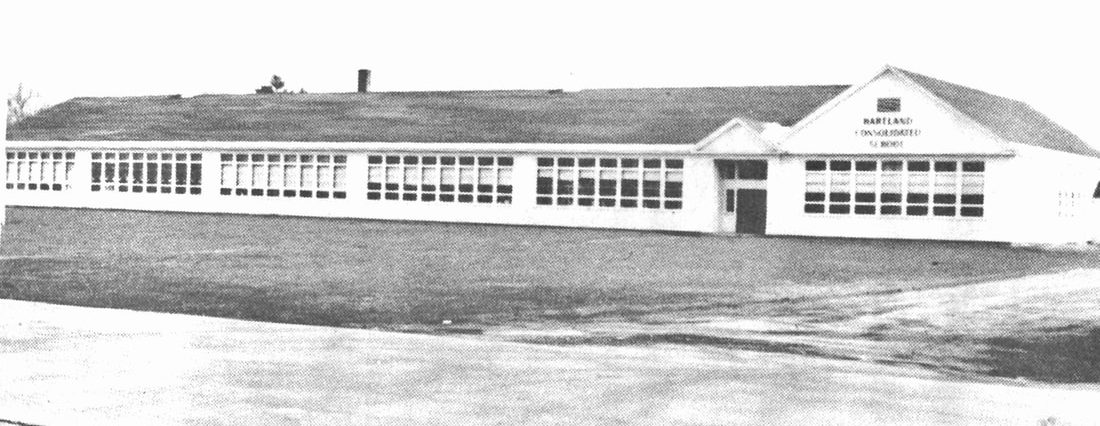
Hartland Consolidated School – Primary to Grade 8
*
In the late 1990s, a large addition was built onto the rear of the building which included a new multi-purpose gymnasium, classrooms and library. Along with town and state funding, numerous private donations were made including a sizable donation which was acknowledged by its namesake as the Irving Tanning Community Center.
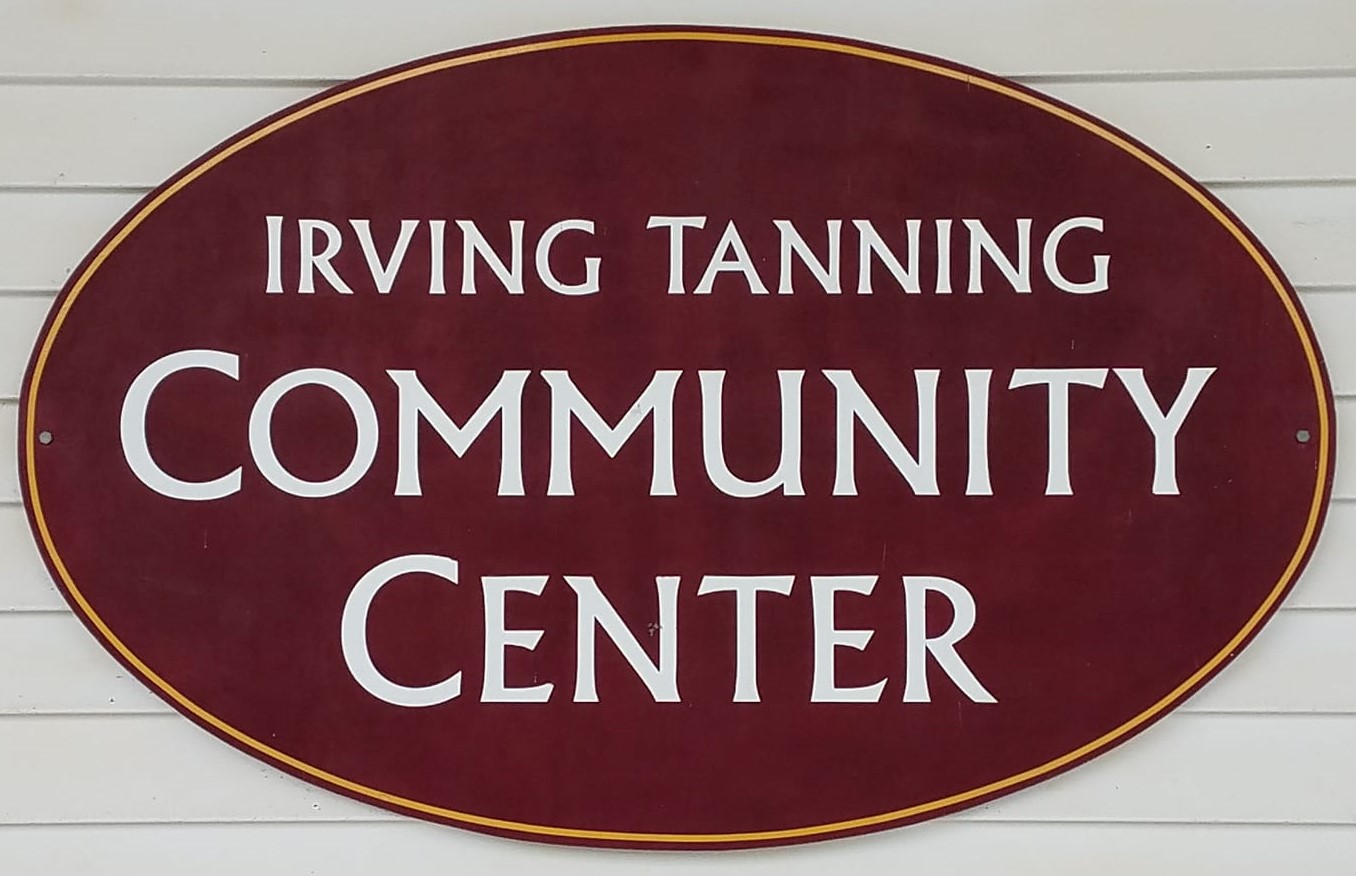
Irving Tanning Community Center Sign
*
Following the opening of a new area middle school in 2002, Hartland Consolidated School served only Primary through Grade 4 students.

Somerset Valley Middle School – Blake Street – Grade 5 to Grade 8 – 2002
*
Hartland Consolidated School closed its doors as an educational facility after plans to build a new Nokomis Regional High/Middle School complex were approved in 2017. The students at Hartland Consolidated School were moved to the middle school building and once the new Nokomis complex opened in 2019 Somerset Valley Middle School was renamed as Somerset Elementary School for Primary through Grade 4.
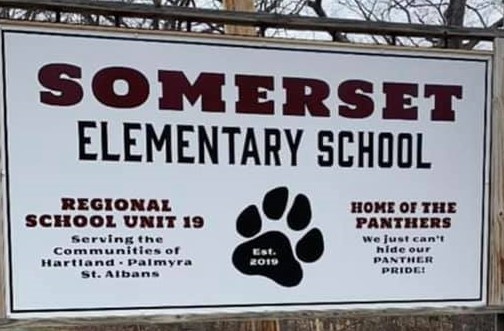
Somerset Elementary School – Primary to Grade 4 – Blake Street – 2019
*

Former Hartland Consolidated School – 2019
(Photo courtesy of Will Bunker Photography)
*
In 2021, the original Hartland Consolidated School building built in 1950 was razed making way for a new Senior Housing Complex.
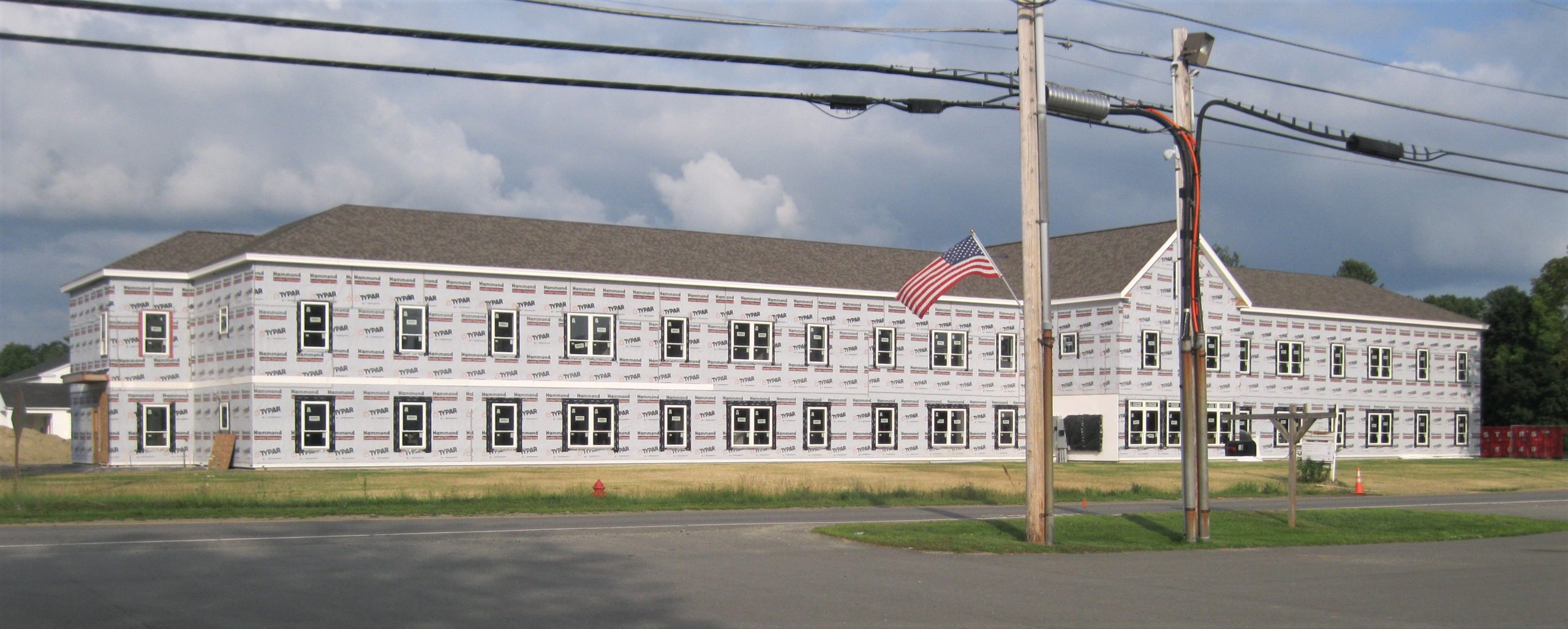
Hartland Senior Housing Complex under construction – August 2021
(Photo by Bruce Fowler)